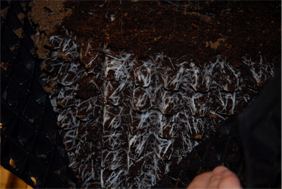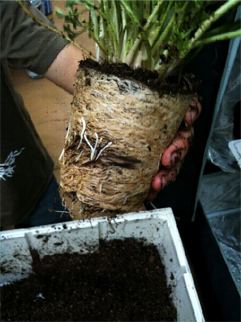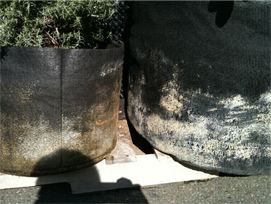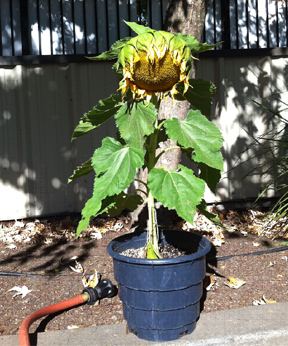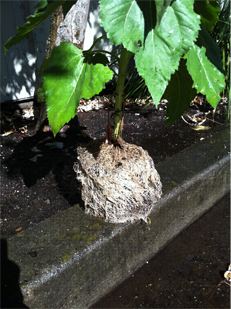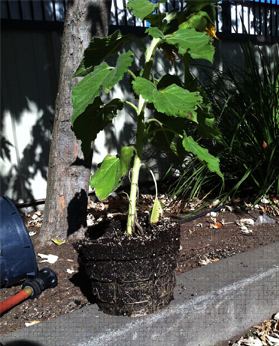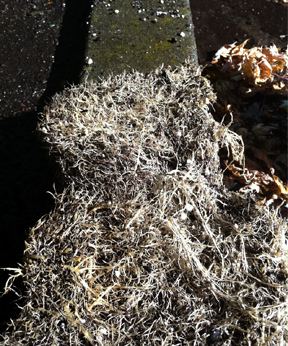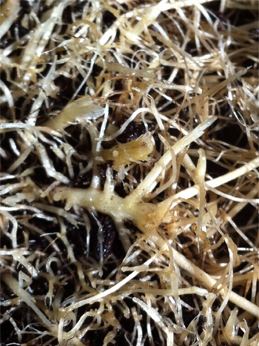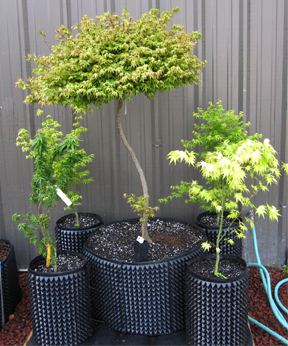The details matter. Some folks cut corners and costs, yet assume they are all the same.
The original guy makes a product, and before you know it there are knockoffs. Everyone has heard of the knockoff but not the originals.
rootmaker series: The results are superior. That is the company of the original guy who put in the work.
Dr Carl Whitcomb. Buy American, Support a fellow American.
----
Are All Root Pruning Containers the Same and Why Should We Use Them?
It could be assumed that a container made to grow plants would be designed to help us grow the healthiest, happiest plants possible. Often times, the opposite is true and containers that are thought to benefit our plants are actually damaging them. This is because of the way plant roots grow.
In normal containers, roots grow to the outside edge of the pot and then circle, over and over again, which can lead to the root system strangling itself. Plants absorb the majority of their water and nutrients from the root tip; therefore, allowing a plant to grow in a standard container creates a sub-par root system- even if you don't allow the plant to live in the container long enough for the root system to suffocate.
Short root systems with several root tips are far more productive than long root systems or big, fat roots. Roots that are white in color with many root tips are the most important for plant health.
So let's talk about root pruning containers:
There are many people who think that root pruning containers are all the same. This couldn't be farther from the truth. Fabric bags all have similarities, such as they are all made of a felt like material. Air-pruning bags, like
Smart Pots, Root Pots, Gro Pro fabric pots and countless others, use a technique invented by Dr. Carl Whitcomb.
Dr. Whitcomb designed this technique to prune the root tip when it hit the fabric. It would do this because the breathable fabric allowed the root tip to be dehydrated, forcing the root to branch. The more pruning happens, the more productive the root system becomes therefore creating a healthier plant. While these containers are far better than normal ones, there were two obvious flaws with this design that forced Dr. Whitcomb to rethink his approach. One flaw is that unless the containers are elevated off the ground or tray the bottom stays wet, the root tips don't dry out and they don't get pruned. Because such a large percentage of the roots hit the bottom of the container, this is just was not acceptable.
The other problem occurs when using mineral nutrition. The salts will build up on the container creating a potentially toxic salt zone. To his credit, these problems became Dr. Whitcomb's inspiration for creating the RootMaker™, RootBuilder II™ and RootTrapper II™.
The RootMaker™ pots are injection-molded hard containers that direct the root tip to an air hole where it can then be pruned. It also has a root directing bottom that immediately forces all roots that hit the bottom to a hole where they can again be pruned. These containers are available in 1, 3 & 5 gallon round containers and the extremely popular 1 gal square.
Above a miniature sunflower in a RootMaker 3 gal
Above the same plant with the container removed. Notice that the roots are not completely visible as they live inside the container and not on its edge.
Above the same plant with soil washed off... Notice the pearly white roots! So dense you couldn't put a stake in it!
Above the same root system dissected.
Notice the heavy branching and no large diameter roots.
Above is a close up of same root system
The RootBuilder II™ works similarly to the RootMaker with the exception that it is sold as a side-wrap wall with a separate bottom and assembles with cable ties. They are also available in more sizes. Sizes include 8 oz, 16 oz, 1 gal, 2 gal, 3 gal and 5 gal. These containers offer the added advantage of being able to cut zip ties so you can peel open the container and transplant plants without turning them upside down. The bumps on the side of the container not only direct the roots to the point where the root tip is dehydrated, but they also provide shade, keeping the root zone cooler in outdoor gardens. The RootBuilder II™ material can also be purchased in rolls of 18" and 34" allowing you to make giant containers of any size!
Above Japanese maples in, RootBuilder II™ containers
While the original fabric bags where an improvement to standard containers they did not meet the high standards of Dr. Whitcomb. Being the innovator he is, Dr. Whitcomb decided to refine his grow bags, creating the revolutionary RootTrapper II™. At first glance these containers may look very similar to the original fabric bags with a white liner. This is not the case. The material in the RootTrapper II™ does not air prune like the other bags, but rather it uses a patent pending technique of trapping the root tip. The root grows into the side of the bag and gets stuck or trapped. Because the root cannot continue its direction forward it is forced to branch. Advantages of these containers are that they can prune thousands of root tips in just one square inch of the container material. Another advantage of this container is that the white liner helps keep the root zone cool and conserves water in outdoor gardens. Additionally these are the only containers that can be used in hydro systems that use a continuous drip irrigation system (example: plants grown in clay pebbles.) The RootTrapper II™ is the only container that can prune the roots in these conditions because it traps the root tip instead of dehydrating it.
The RootTrapper II™ is by far the best container for growing in virtually any environment. The disadvantage of these containers is that they generally will start deteriorating after a few years of use, where the RootMaker™ & RootBuilder II™ generally last 10 years in the sun!
Often, the plant's root system is left "out of sight, out of mind"... Don't make this mistake! Consider this: Gardeners regularly and repeatedly spend money on root stimulators such as Mycorizal fungi and other consumable products. While I believe in Mycorrhiza and other root stimulators, I don't believe any of these products will show you as a dramatic effect as root pruning containers, particularly in "The Root Maker System." Considering these products are durable goods, I believe they are one of the best investments you can make in your garden as they will provide dividends for years to come!
Source:



